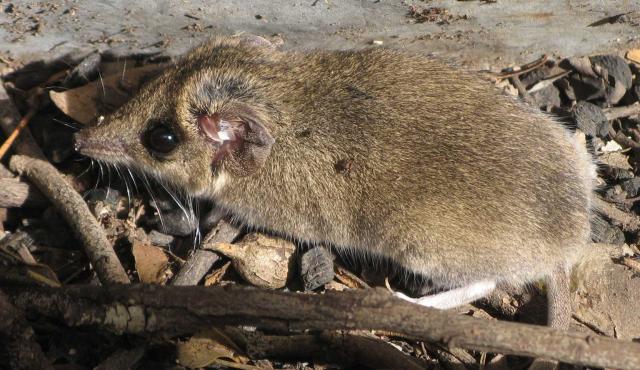A range of teacher professional learning programs will be developed to accompany the Biodiversity of the Western Volcanic Plains online outreach...


Common Dunnart
Sminthopsis murina murina
Similar to Fat-tailed Dunnart. Shelters in hollow logs or under grass tussocks or rocks. Sometimes shelters in groups overnight and in winter. Female may live to breed a second year but the male usually dies after mating. This species appears to benefit from periodic burning of its habitat.
| Details | Description |
| Type | Mammal |
| Group | Marsupial |
| Other Common Names | Common Marsupial Mouse |
| Identifying Characteristics | |
| Distinctive Markings | Grey fur with white underneath, large ears and eyes. |
| Diet | Carnivore. Eats ground dwelling invertebrates such as beetles, cockroaches and moths. Does not need to drink as it gets enough water from its food. |
| Habitat | Can live in a wide range of habitats including woodlands and granite outcrops. Prefers areas with leaf litter and places to shelter in such as hollow logs and rotting stumps. |
| Native Status | Native to Australia |
| Taxonomy | |
| Phylum | Chordata |
| Class | Mammalia |
| Order | Dasyuromorphia |
| Family | Dasyuridae |
| Genus | Sminthopsis |
| Species | murina murina |

Distribution maps indicate current and historic locations where species have been sighted.
Source: Atlas of Living Australia
| Conservation Status | |
| DEPI Advisory List | Vulnerable |
| FFG Act | Not listed |
| EPBC Act | Not listed |
The conservation status of species is listed within Victoria and Australia.
The Department of Environment and Primary Industry (DEPI) Advisory List consists of non-statutory advisory lists of rare or threatened flora and fauna within Victoria.
The Flora and Fauna Guarantee Act 1988 (FFG Act) lists threatened species in Victoria. Under the Act, an Action Statement is produced for each listed species.
The Environment Protection and Biodiversity Conservation Act 1999 (EPBC Act) is the Australian Government’s key piece of environmental legislation, listing nationally threatened native species and ecological communities.



